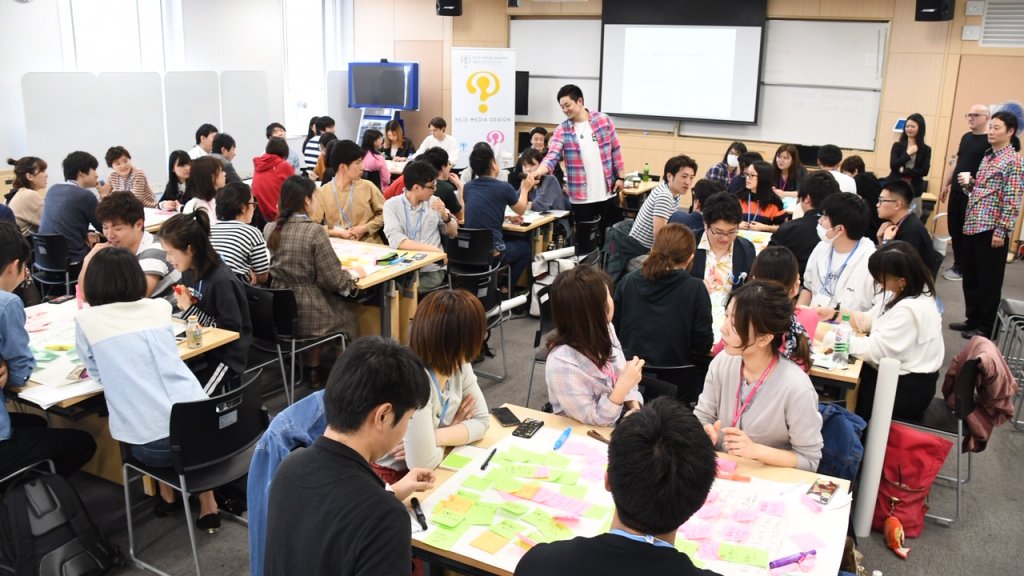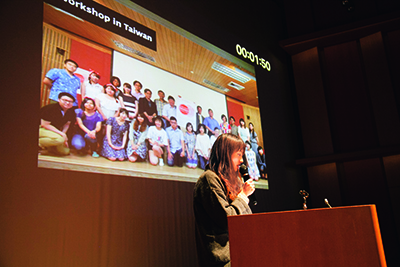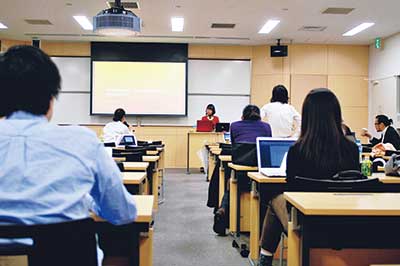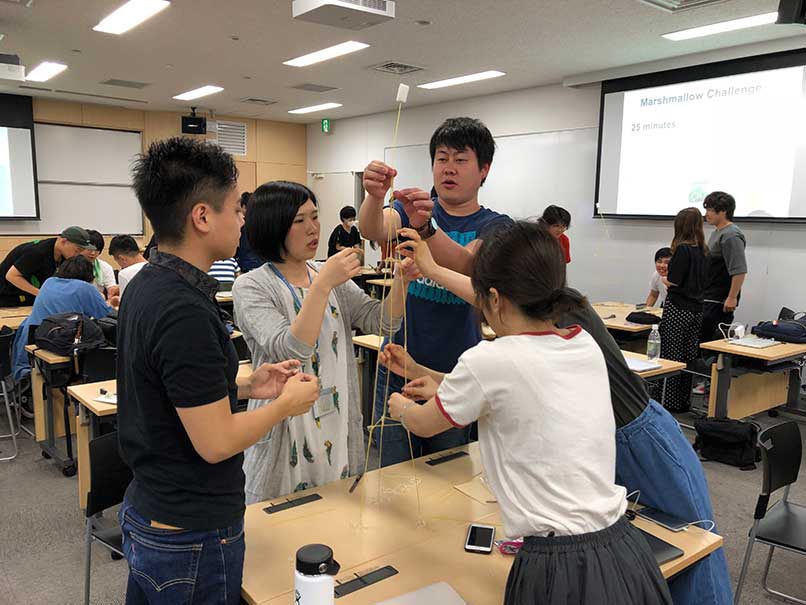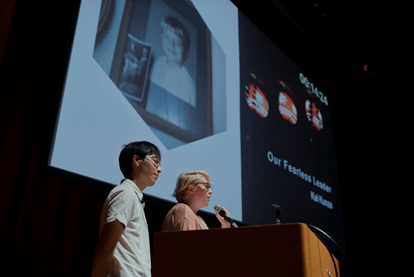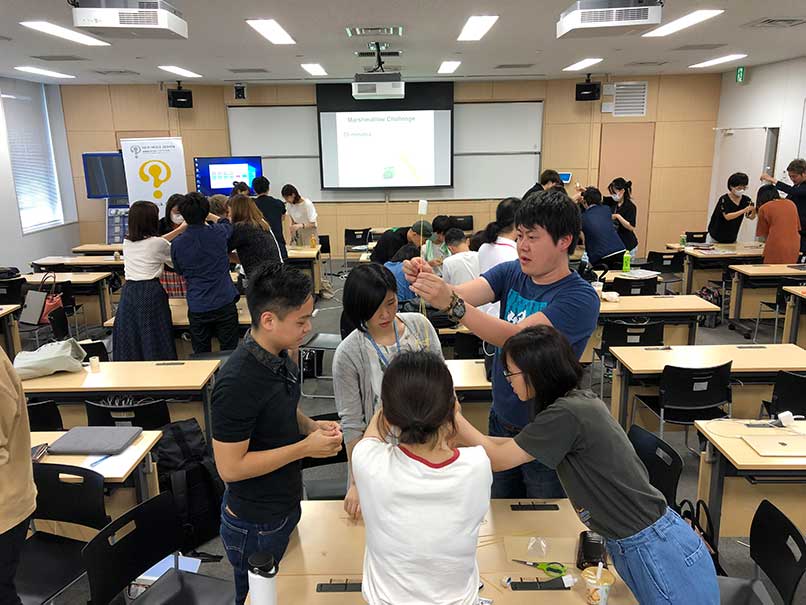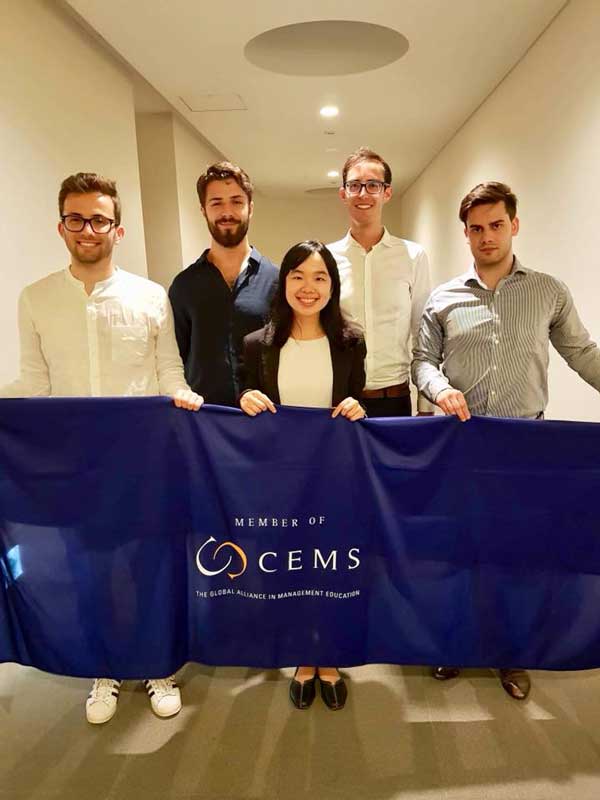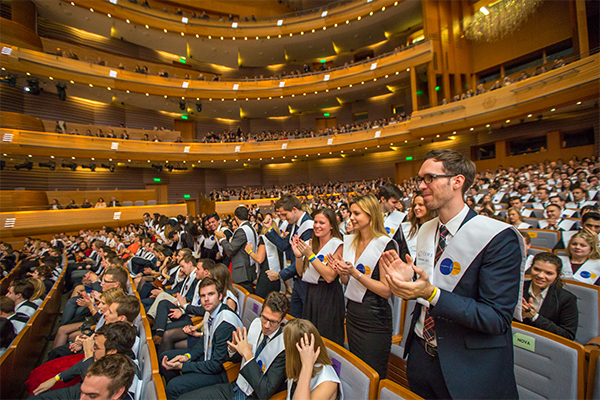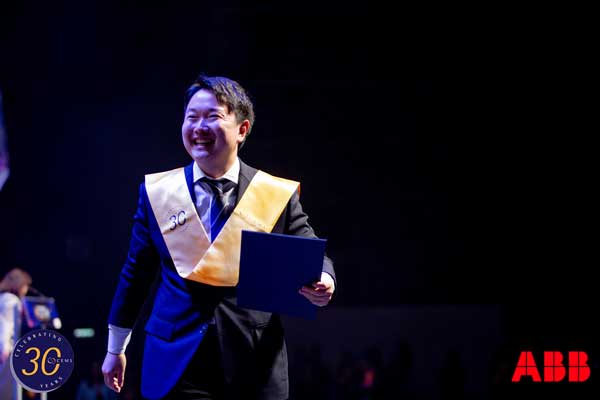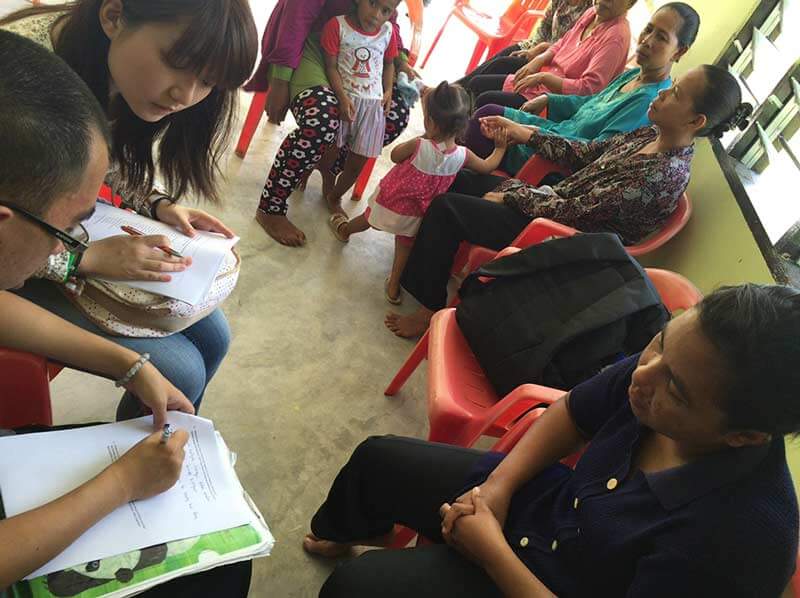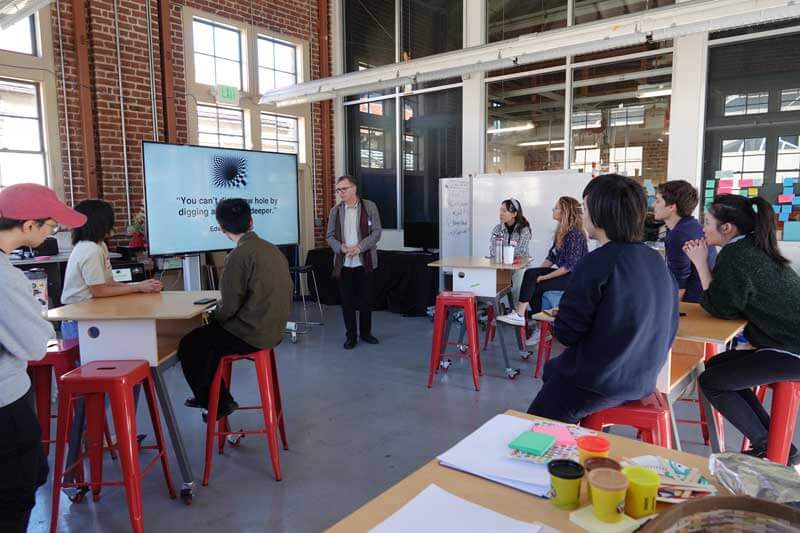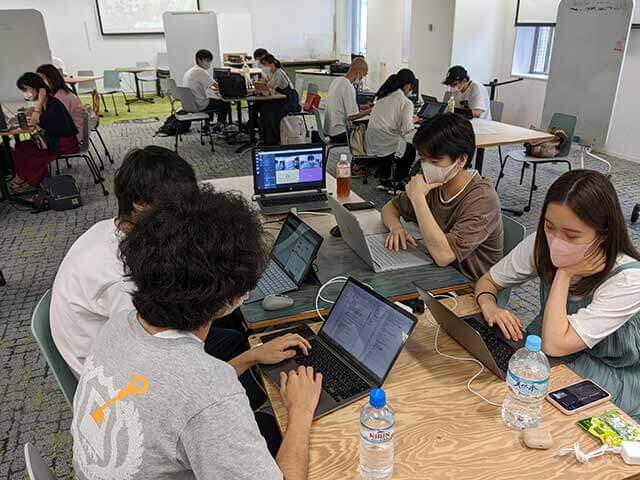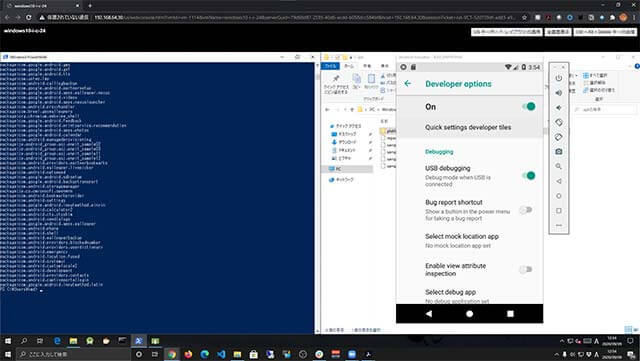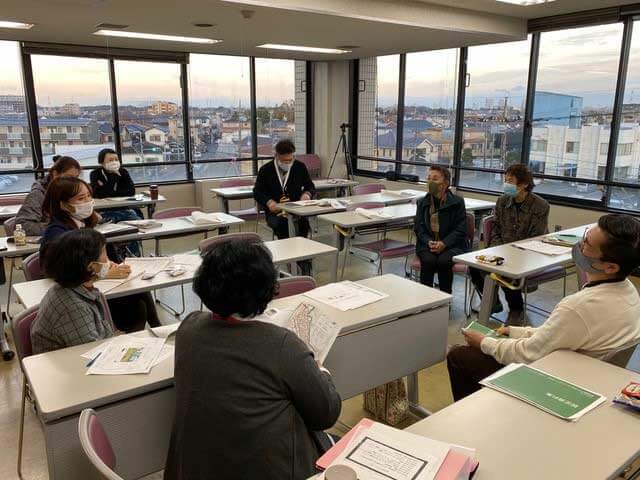THEORY/STRATEGY SUBJECTS
DESIGN TRACK
DREAM-DRIVEN DESIGN AND INNOVATION
The course introduces Dream-Driven Design to depict our desired future through the power of dream and imagination, and backcasting what we can do today to change the course to achieve our dream future. It begins with human curiosity and sense of wonder, the joy of exploration and discovery to collect many inspiring “dots”. Then, dream, daydream, imagination, and fantasy are used to spark insights by connecting the seemingly unrelated “dots” you have collected. The desirable future is designed by translating the insight to an enchanting story to contextualize the insight. Finally, the dream future is illustrated through artful and playful expression.
MARKET DESIGN FOR WELL BEING CITY
Introduce what a city is comprised of, how it provides values towards each and every citizens, what markets are there to support the experience, based on microeconomics perspective.
EMBODIED INTERACTIONS
Embodied Interactions aims to design new experiences based on the human ability to recognize the world in bodily action. With understanding the human model of cognition and action, learning technologies to manipulate our visual or haptic perceptions, we try to understand the new way to design human bodily experiences using emerging technologies.
CREATIVE CONCEPTION FOR TRANSMEDIA
The Medium is continuing to transform with technologies and human desires of the time. Now we call it ‘Transmedia’. What is the creative approach for designing future Transmedia? What is the future synesthesia experience with exponential technologies as VR/AR/MR, HD audio-visual technologies, HD haptic technologies, hi-speed information and communication technologies as 5G, AI and cloud?
CIRCULAR DESIGN INSPIRED BY NATURE
The “circular economy” and “circular design” (“circularity”) are buzzwords within the business community and also in the world of marketing. More than buzzwords, a circular approach to design and manufacture will increasingly be mandated in law like we can see in the European Union’s New Green Deal in effect 2020 and similar “green deals” in the Americas and then Asia. Areas covered: Bio-design. From bio-inspired to bio-engineered, we will explore the tools of genetic engineering, selective breeding, and bio-research to conceptualize and create new materials, concepts and products. A New Aesthetic.
MATERIAL INTERACTION
In recent years, a variety of new materials have been developed, and designers and artists have been using new materials and they develop their own materials to make new designs, expressions and devices. In this course, we use material interaction techniques to observe and control the properties of materials, and students learn how to make a material with various properties ( such as deformation and color change), and how to apply it in practical applications. In addition, we use fabrication methods that utilize the characteristics of the material (digital fabrication technology such as 3D printing and laser cutting.), and learn how to control the state and form of materials. Students also learn how to add functions and develop new materials by combining material properties. Through prototyping of sensors, actuators, and fabrication machines, it is possible to learn how to design the next media.
OTAKU CULTURE
"Anime", "Game", "Comic", and "Cosplay" are some of the aggressive and innovative forms of pop culture found in Japan. These so called "Otaku" cultures are now focused throughout the globe and giving Japan an important role to enhance innovative creativity. It also delivers a new sense of atmosphere in terms of "Kawaii", and "Moe". These delivered contents and subcultures distributed from Japan have created trans-national cultural boom referred to as "Japan Cool" or "Cool Japan" and now creating an inevitable cultural influence.Furthermore, political strategy suggests favorable international competitiveness to claim these cultural deliverables as the seeds of creativity influencing its national branding.Objective of this course is to understand how the roots of these otaku cultural activities in Japan have expanded internationally as one of Simulacra with creators, and activists of the fields: How the technology has been created, and knowing its real motivation to drive these sub-cultural activities. This course will first address the backgrounds and characteristics as well as its innovative expansion of "Otaku" culture recognized internationally, that were once born in the age of competing creativity that comes from Social Darwinism inherent during the phase of its economic growth and development of Japan. Target of this workshop is for whom wishes to know further on Japanese Otaku Culture in General.
METHODOLOGIES FOR SERVICE DESIGN, ADVANCED SERVICE DESIGN
This course provides a set of introductory talks for you to design service that provides well-being. Realizing a well-being world requires innovation; not just the goods but as service. Through this course, we provide insights on innovation marketing, marketing, management accounting, information architecture, startup strategies, intellectual properties, and philosophy, and integrate them as methodologies for service design. This class will be on a blended learning style of both MOOC and real time discussions.
VISUAL SYNTHESIS
In this class, as an extension of visual design, the unique textures, sensations of operation, and physical sensations that arise when interaction occurs with a visual image are treated as design objects. Possible areas of application of the design concepts learned in this class include interaction design, product design, and application to media art, where the design of experiences and sensations are important. Unlike the design of physical tools and devices, sensory qualities such as the sense of operation, the sense of touch, and the physical senses created by interaction with visual images that can be created by digital computers can be artificially programmed and recombined, and the way humans perceive and perceive them is also an issue. This in itself is a unique area of design in an academic context and has a wide range of applications, as it requires insight into the underlying cognitive foundations. In this class, through a survey of existing examples and works related to visual interaction design, as well as through practice and practice, we aim to develop the thinking and attitudes necessary for designing the introspective event and sensation of manipulating visual images.
TECHNOLOGY TRACK
COMPUTING SYSTEM ARCHITECTURE
In real project, everybody should build complex systems. To establish this purpose, you should learn modeling method of complex information systems, architecture of computers, and design method of information systems. In this class, you will understand modeling and design method of information systems learning with computer architecture, operating system, system structure, and protocol stacks.
NETWORK OPERATION
This lecture will be given in English in Academic Year 2015. As most of the class material is written in Japanese and English, and as you can answer in Japanese in the examination, you may take the class even if your English skill is not perfect. The Internet is now a global common digital infrastructure to exchange various kind of digital information of huge volume. When we are to investigate new services, most of them are disconnected to the Internet in some degree. This suggests us that just an Internet user is not sufficient skill as a KMD student, but required to understand how the Internet works even briefly. In this class, various notions related to the Internet is given, several of important communication protocols are discussed to obtain brief overview of the Internet architecture. But due to time constraint, only DNS is covered in this class as all application layer protocols because DNS is an infrastructure service.
DIGITAL MEDIA INNOVATION
We learn digital technologies for the advancement of media such as motion pictures and sound. We also learn practical issues in the actual media applications through the usage of advanced digital media systems. In addition, we challenge to create high-quality motion picture contents such as 4K or 3D cinema.
COMPUTATIONAL SERVICE ARCHITECTURE
This course is focusing on computational services which are used in the Internet. Services and application used network, have designs and implementation to withstand scalability and performance. Such designs include client-server, or peer-to-peer mechanisms, application protocol structure, definition method in data structure, operating system structural design, and user interface. This course will be using some typical distributed operating system with some services application to understand the mechanism of computational services used inside the Internet.
INFORMATION SECURITY TECHNOLOGY
In this lecture, we explain security related topics such as internet, cipher, policy, management, etc.
PERCEPTION AWARE COMPUTING
In this course, we discuss the basics of human cognition/activities and how to capture/detect physical and cognitive activities using sensors. The majority of the course will be about explorative data analysis and visualizations using sensor data with a focus on application cases from Perception Aware Computing. Perception Aware Computing is computing that understands how we humans perceive our environment. With computers being more and more integrated into our surrounding, the limiting factor is no longer memory, battery power or processing speed, but human attention. For Computing to become useful in everyday situations, the interface needs to vanish as much as possible. Computing needs to become pro-active. Computing that deals with recognizing the users cognitive states can be called perception aware. We discuss the basics of human perception and how to recognize specific cognitive states using sensors. The sensing modalities covered include inertial motion sensors (found in most smart phones), computer vision, optical eye tracking as well as electrooculography etc. We explore basic research methodology related to experimental setups, giving the students a check list what to take care of when they design experiments or user studies, limiting biases and unwanted effects on the collected data. The students will learn to apply filtering and frequency analysis related to the sensing modalities. They will perform simple data analyses on sample projects and explore visualizations based on time series data. The machine learning part covers feature extraction and some common machine learning models used to understand human behavior (e.g. Hidden Markov Models, Support Vector Machines). In the last part, we will discuss how to induce long term behavior change utilizing perception-aware computing principles and work on a final project. The project can include an experimental setup related to reading detection using smart glasses, a data visualization on smart phone data, the concept for a mobile app related to concentration etc. depending on the students interests and ideas.
EMPATHETIC COMPUTING IN VIRTUAL SPACES
Empathy refers to our ability to understand others by being in their shoes and sharing their emotions. How do we see with their eyes, listen with their ears, touch with their hands, smell with their nose, taste with their mouth, and feel with their heart? When designing experiences, these are very important considerations that allow us to better understand each other, thus creating a society that can keep striving to be better. Yet, the future of our society may most likely lie in the metaverse. When this happens, how can empathy be understood, conveyed and shared? This course will introduce the concept of empathic interaction, its relation to emotion and the future of empathy in the Metaverse. Students will be taught how to use Unity to build immersive VR worlds. By the end of this course, students will understand not just how to develop empathic systems, but to also adapt and expand it to the Metaverse future. This will introduce not just new challenges and considerations, but also new ideas and opportunities.
MANAGEMENT TRACK
GLOBAL SOCIETY
This class is designed for the understanding of global society and its possibilities/problems and provided as a sequence of workshops of analysis and discussions. We analyze the dynamic changes that was brought by the globalization of society that is based on the boarder-less communication platform in the several fields of culture, technology, education, economics, policy, governance, journalism and so on. After these analysis, we discuss about the problems and the future possibilities of each field based on the results of our analysis. Final challenge is to develop a new service concept based on the discussions. The goal of this course is providing the deep understanding on the current situation of global society and developing the insight about it.
SOCIAL CREATION
Learning about the general project construction. The theme ranges from economy to cultural activities for encouraging creativity and self-expression. Lectures on general theories about building content, public service, business, NPO, consortia, organizations and other projects. In particular, presenting models for planning and providing workshops, production of content and management of public consortia, NPO and companies.
GLOBAL BUSINESS STRATEGY AND RESPONSIBLE LEADERSHIP
In this course, we discuss how large corporations provide value to modern-day society, and how social innovation can be a change maker for the society. The goal of this course is to understand the methodology of large global corporations for creating value for society, and also to consider how social innovation can change the course of society.
BUSINESS AND SUSTAINABILITY
We discuss the essentials of global business, especially sustainability of business.
REIMAGINING BRAND COMMUNICATION
As we continue to move forward in time, there are plenty of unknowns surrounding how changes, big or small, will continue to affect businesses and consumers. The commercial world that we return will most likely be a very different one to the one we left.
While much has been made of business pivots during these uncertain times there are clear marketing trends appearing around how consumers are wanting to interact with businesses.
Prior to the pandemic, many industries and organizations were only just starting to understand and transform by utilizing the power of the internet, price-comparison, peer-review, and ‘auto-switch websites. As the pandemic hits, customers that re-emerge from this crisis will be fewer and probably much more risk-averse than before. They will be looking for brands they trust, developing Brand propositions and partnerships based on trust will be critical going forwards.
Join us to gain insights into how these challenging times have shifted marketing communication across industries and how consumer behavior changes moving forward. We'll also walk through marketing strategies and concepts that engage consumers in the post-pandemic era.
CONTENTS CREATIVITY AND ECONOMICAL IMPACT OF OTAKU CULTURE
This Course will be held in English and with Japanese Terms, and for Japanese, only speakers, translation will be followed if requested. "Comic", "Anime", "Game", "Idol", and "jpop Songs" are some of the aggressive and innovative forms of pop culture found in Japan started and accelerated from the middle 1960s The contents originated from books and magazines transformed and recreated to comics, novels, game and many other forms of medium and contents, thus creating media mix as example, Televi-Manga(TV Anime) spreading throughout houses and families. These contents are inspired to secondary creativity by the fans: amateur creators. Community events, in 1962, Japan SF Convention starts, and the seeds of World''''s Largest Doujin publishing convention "Comic Market" starts on 1975. These Otaku cultural convention and meetings up-rises and evolves to create cultural forms on Otaku community, and now spreading throughout the world. In this Future Direction Chair-ship Lecture, we focus on the spiral of contents creation and contents consumption. Lecture will provide a knowledge to understand the protocols of creativity inspired by consuming of the contents(Secondary creativity, thirdly creativity).
VENTURE FUNDAMENTALS *Daiwa Securities Chairship course
The sessions are aimed to help prepare the student for developing IDEAS in the Design and Media sectors. The objective of the 7 sessions is to develop the IDEA to the point that it can be validated with potential customers. The approach and material covered reflects current strategies at some of the world’s leading Start-Up Incubators in Design Schools with special emphasis on projects that have a design component.
VENTURE LAUNCH *Daiwa Securities Chairship course
The sessions are aimed to help prepare the student for the start-up creation and launch process. Once the Validation with customers has been achieved then we go through the main building blocks of developing real startup. Students will be asked to develop marketing strategies, operations strategies and a financial plan for their startup Ideas as well as an overall investor pitch which they will present to a group of investors on the final day. There will also be exposure to the area of Corporate Innovation and in particular how Innovation today has changed from the past. Special emphasis is placed on how BIG DATA is affecting innovation strategies.
POLICY TRACK
POLICY FOR GLOBAL FUTURE
This class will discuss how policies will shape the society of both business and non-business activities.
INTELLECTUAL PROPERTY TACTICS
Countries find it increasingly important to take a strategic approach to intellectual property in order to adapt to the increasingly fierce global competition in this area. In this class, we review the directions for Japanese intellectual property policy, analyze present case studies and compare intellectual property policies in other countries. Our focus is on intellectual property policy in the area of digital media and content, and more specifically on questions of copy right policy, patent and trademark policy, unfair competition prevention policy, and international standardization policy.
MODERN ISSUES OF PUBLIC POLICY
インパクトあるイノベーションをいち早く創出するには、単に経済社会情勢のみならず、ビジネスや市場の動向、更には政府の政策の方向性についての知識も必要である。このコースでは、世の中の方向性を左右する大きな問題ごとに、それへの望ましい政策対応について議論することで、政策に関する学生の理解を深める。






